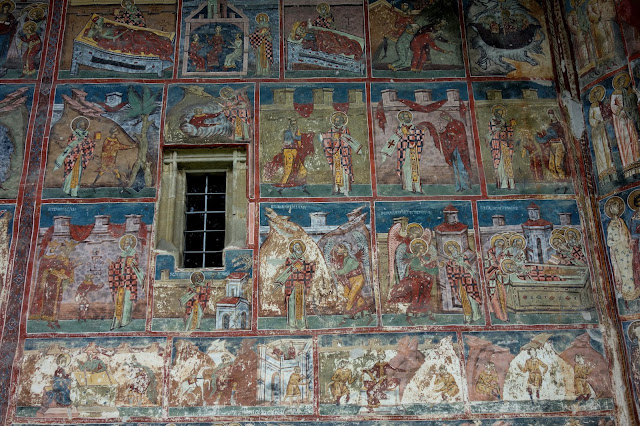Iași is the largest city in eastern Romania. Located in the Moldavia region, Iași has traditionally been one of the leading centres of Romanian social, cultural, academic and artistic life. The city was the capital of the Principality of Moldavia from 1564 to 1859, then of the United Principalities from 1859 to 1862, and the capital of Romania from 1916 to 1918. Known as The Cultural Capital of Romania, Iași is a symbol in Romanian history. The historian Nicolae Iorga said "There should be no Romanian who does not know of it". Still referred to as The Moldavian Capital, Iași is the main economic and business centre of the Moldavian region of Romania.
According to Eurostat, with 382,484 residents, Iași has the second most populous functional urban area in Romania. Home to the oldest Romanian university and to the first engineering school, Iași is one of the most important education and research centres of the country, and accommodates over 60,000 students in five public universities. The city is also a candidate to become, in 2021, the European Capital of Culture.
Iași also figures prominently in Jewish history, with the first documented presence of Sephardi Jews from the late 16th century. The oldest tomb inscription in the local cemetery probably dates to 1610. By the mid-19th century, owing to widespread Russian Jewish and Galician Jewish immigration into Moldavia, the city was at least one-third Jewish. In 1855, Iași was the home of the first-ever Yiddish-language newspaper, and in 1876, the site of what was arguably the first-ever professional Yiddish theater performance, established by Avraham Goldfaden. The words of HaTikvah, the national anthem of Israel, were written in Iași by Naftali Herz Imber. Jewish musicians in Iași played an important role as preservers of Yiddish folklore, as performers and composers. According to the 1930 census, with a population of 34,662 (some 34%) out of the total of 102,872, Jews were the second largest ethnic group in Iași. There were over 127 synagogues.
After World War II, in 1947, there were about 38,000 Jews living in Iași. During the Postbellum period, Iași played a prominent part in the revival of Yiddish culture in Romania, and, from 1949 to 1963, it was home to a second company of the State Jewish Theater. The intellectuals of Iași included many Jewish academics, scientists, writers, journalists, doctors, lawyers, and engineers. However, the number of Jews continued to drop because of massive emigration to Israel and, in 1975, there were about 3,000 Jews living in Iași and four synagogues were active.[27]
Currently, Iași has a dwindling Jewish population of ca. 300 to 600 members and two working synagogues, one of which, the 1671 Great Synagogue, is the oldest surviving synagogue in Romania. Outside of the city on top of a hill there is a large Jewish Cemetery which has graves dating from the late 19th century; burial records date from 1915 to the present day and are kept in the community center. Since 1996, an annual publication on the history of the Jews in Romania, has been published by the local history and archeology institutes of the Romanian Academy. There is also a Jewish community center serving kosher meals from a small cantina. (source wikipedia)
our first stop was on the way into town - the Jewish cemetery mentioned above-
The Great Synagogue of Iași was built in 1671 and is the oldest surviving synagogue in Romania. It is listed in the National Register of Historic Monuments. The building has round-arched windows, and two wings. One wing is two-stories high and capped by a barrel-vaulted ceiling. The other is a tall, single-story hall with and a 32' diameter dome capped with a lantern. The dome was added to the building in the early 20th-century.
Of the more than 110 synagogues in Iași before World War II, only the Great Synagogue remains as a result of the Holocaust. It is a free standing building in a small garden off Cucu Street (once called Sinagogilor Street for the many synagogues located on it) just north of the city center in the old Jewish neighbourhood of Târgu Cucului. The synagogue underwent major renovations in 1761, 1822 and 1864. It was partly restored in the 1970s and a major restoration was begun in 2010. The Women's gallery houses a small museum of the Jewish community of Iași. The synagogue is one of only two which continues to serve the dwindling Jewish community of Iași. (from wikipedia)
we couldn't go inside because of the renovations but the exterior seems pretty complete-
I did find one photo from 1970 on the Internet that shows the inside of the synagogue-
from there we went off to our swanky new hotel - named for a bunch of stars--- oh yes Pleiada or some such... we had one last meal out at a traditional Romanian restaurant and turned in- unfortunately we have to part with Cornl tomorrow morning and that will be sad because we have really liked spending this time with him.
we went to this nice restaurant which was ALSO out of cabbage rolls- LOL but we did get another papanasi- a double for Phil and a single for each Cornl and me... and we made jokes with each other about how he knew us so well he could write a bio about Phil and how we would come back to visit when he was getting close so we could help edit.... and - how we thought he had been a really excellent guide and how much we appreciated the time and effort he devoted to making sure we had the trip we wanted....
so I actually think these are the perfect last photos from Romania- a trip we enjoyed immensely and would recommend to all..... next up some more restaurant reviews and our Thanksgiving feast and Cuba trip planning.... picking classes for the winter term at school... lots to do-
here is our menu for Thanksgiving- so next week- big food days LOL





















































































